
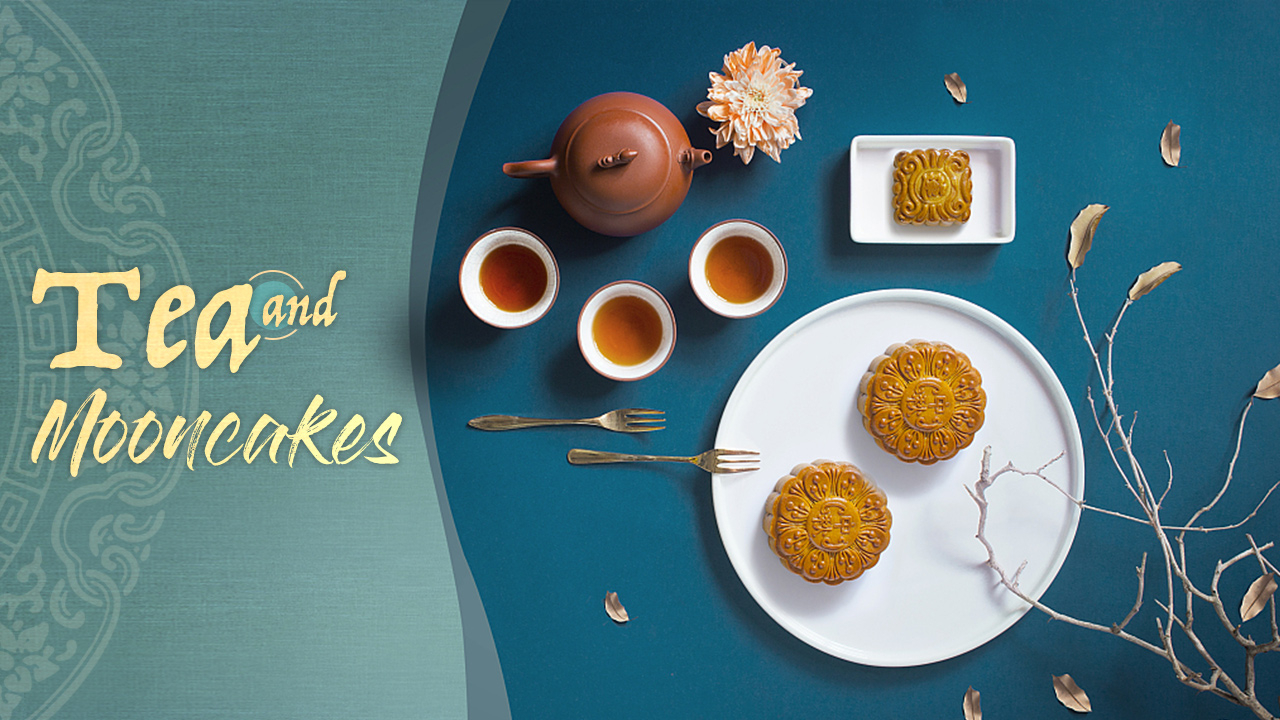
Around the Mid-Autumn Festival, you will find an amazing yet common scene in China – almost everyone is holding a gift box, big or small, on their way to and from work. These are the boxes they carefully selected in restaurants, hotels and bakeries. Don't underestimate these gift boxes, which invariably contain a must-have Mid-Autumn Festival delicacy – mooncakes.
In addition to mooncakes and osmanthus wine, Mid-Autumn Festival and tea are also inseparable. The history of Mid-Autumn family reunions reflects that of the popular tea culture in China.
It was customary to boil and drink compressed tea, also known as tea bricks, in the Tang Dynasty (618-907). In order to facilitate transportation, tea leaves were usually pressed into a round shape – a symbol of reunion.
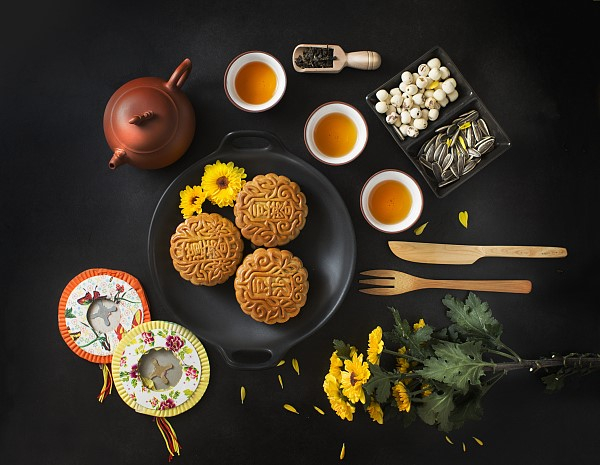
During Mid-Autumn Festival, mooncakes and tea are inseparable. /VCG Photo
Tea competitions, contests to judge the quality of tea, prevailed in the Song Dynasty (960-1279), when the tea culture thrived.
Mooncakes and tea are necessities during a Mid-Autumn Festival. Tea can relieve the greasy taste of the food and help digest, especially from high-calorie mooncakes.
It's time to look into what to drink with your selected mooncakes.
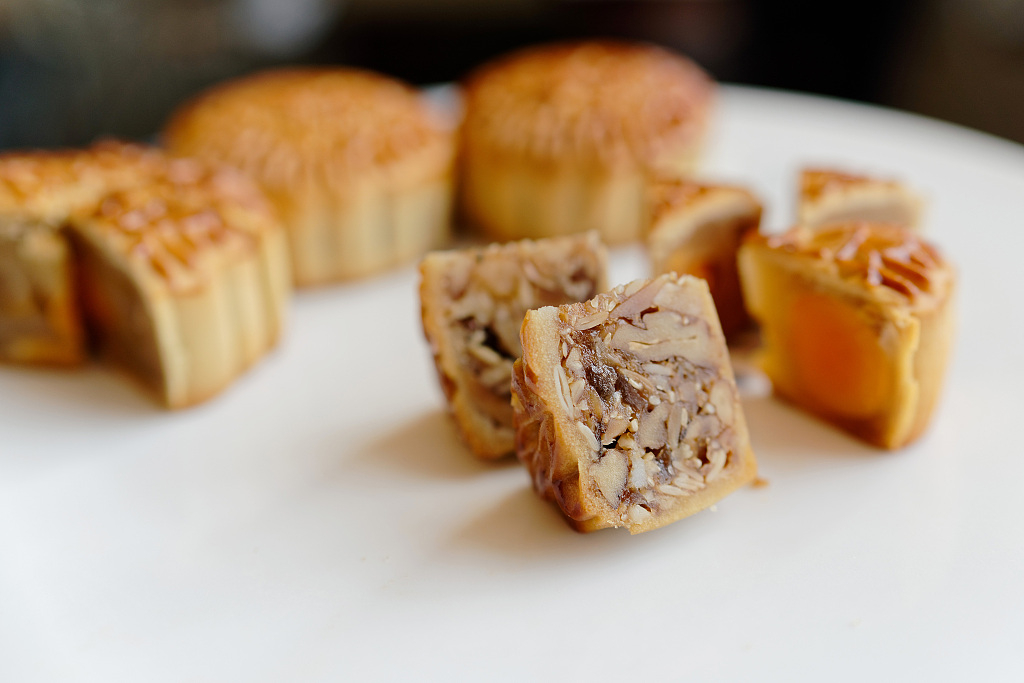
The five-kernel mooncake. /VCG Photo
For greasy mooncakes, such as five-kernel mooncakes, people can choose pu'er tea to match. The filling of the five-kernel mooncakes – consisting of five types of coarsely-chopped nuts and seeds – is held together with maltose syrup, giving it a thick texture. Pu'er is a variety of fermented tea produced in China's Yunnan Province. A strong tea, such as pu'er, is needed to balance the filling of nuts, seeds, and sticky, sweet maltose syrup.
Pu'er tea, however, helps break down cholesterol. Have a cup of pu'er after eating mooncakes.
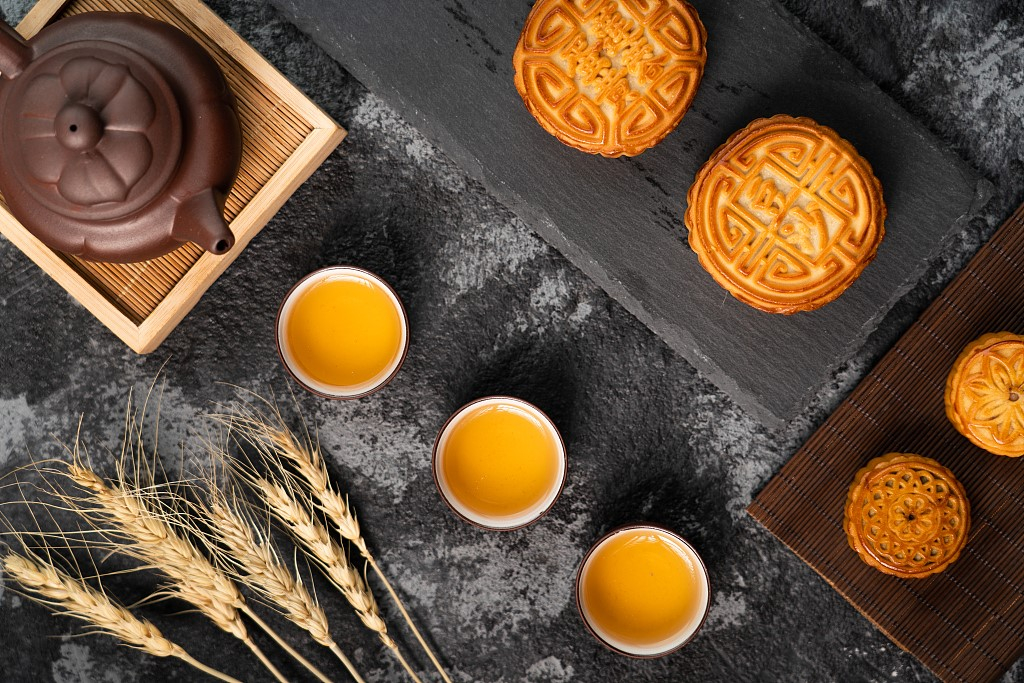
The mooncakes with fillings of lotus-seed paste and red beans can be paired with white tea. /VCG Photo
Sweet, fruity mooncakes, like those with fillings of lotus-seed paste and red beans, can be paired with white tea. It is harvested primarily in China, mostly in Fujian Province. The flavor of white tea is characterized as "lighter" than most green or traditional black teas.
White tea, like pu'er and green tea, contains polyphenols, a set of phytonutrients that are thought to be responsible for the health effects of tea. It can increase glucose metabolism, and the lighter taste will help mellow out the slightly excessive sweetness from the red beans and sweet paste.
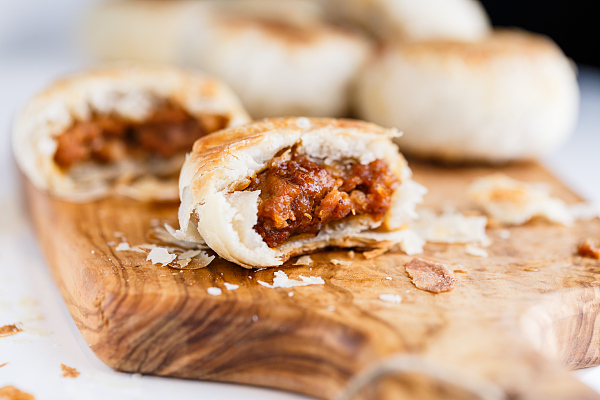
The Suzhou-style crispy pork mooncakes. /VCG Photo
Salty and sweet mooncakes, like Suzhou-style crispy pork mooncakes, can go along with Tieguanyin, a premium variety of Chinese oolong tea that originated in the 19th century from Anxi, Fujian Province.
Because Tieguanyin is a semi-fermented tea, it is not as astringent as green tea, with a warm and moist aesthetic, which can help balance the salty and sweet taste.
(Cover image by Yin Yating)

Copyright © 2018 CGTN. Beijing ICP prepared NO.16065310-3
Copyright © 2018 CGTN. Beijing ICP prepared NO.16065310-3